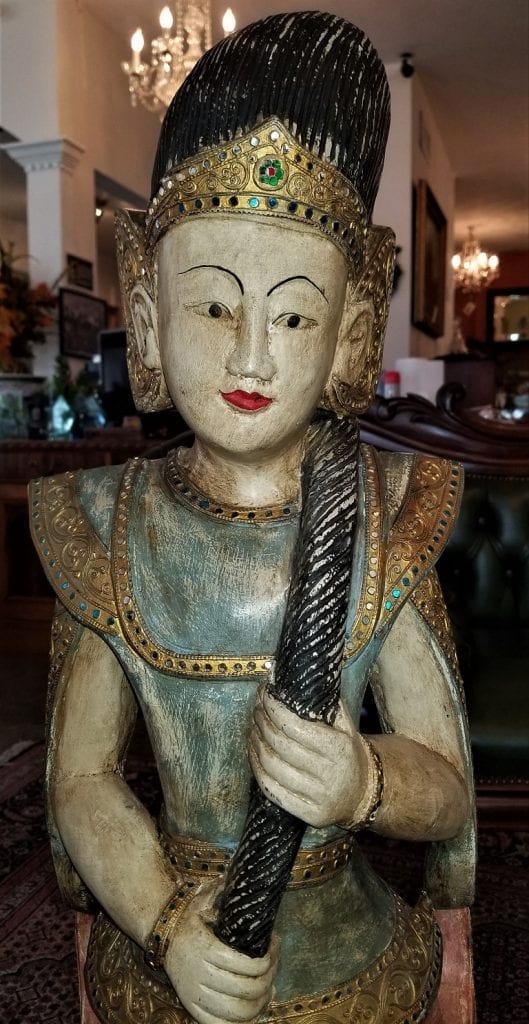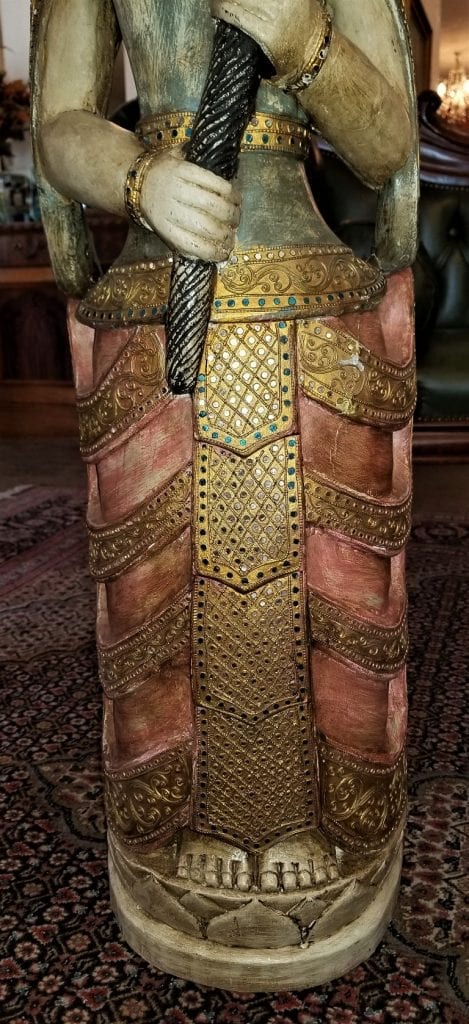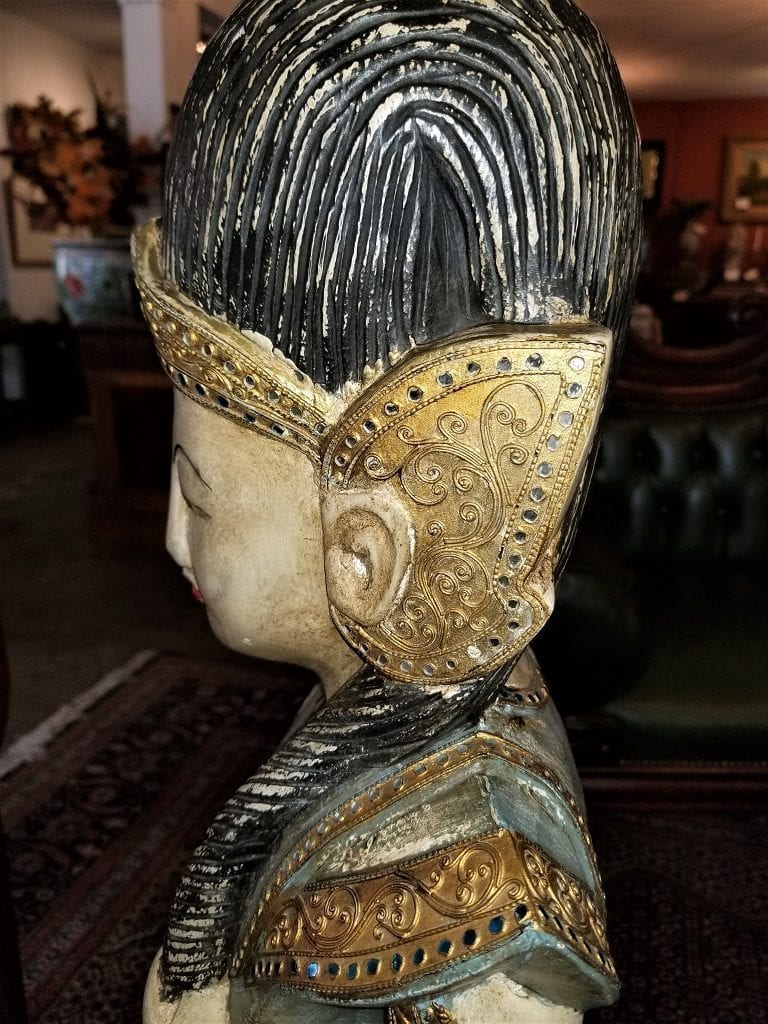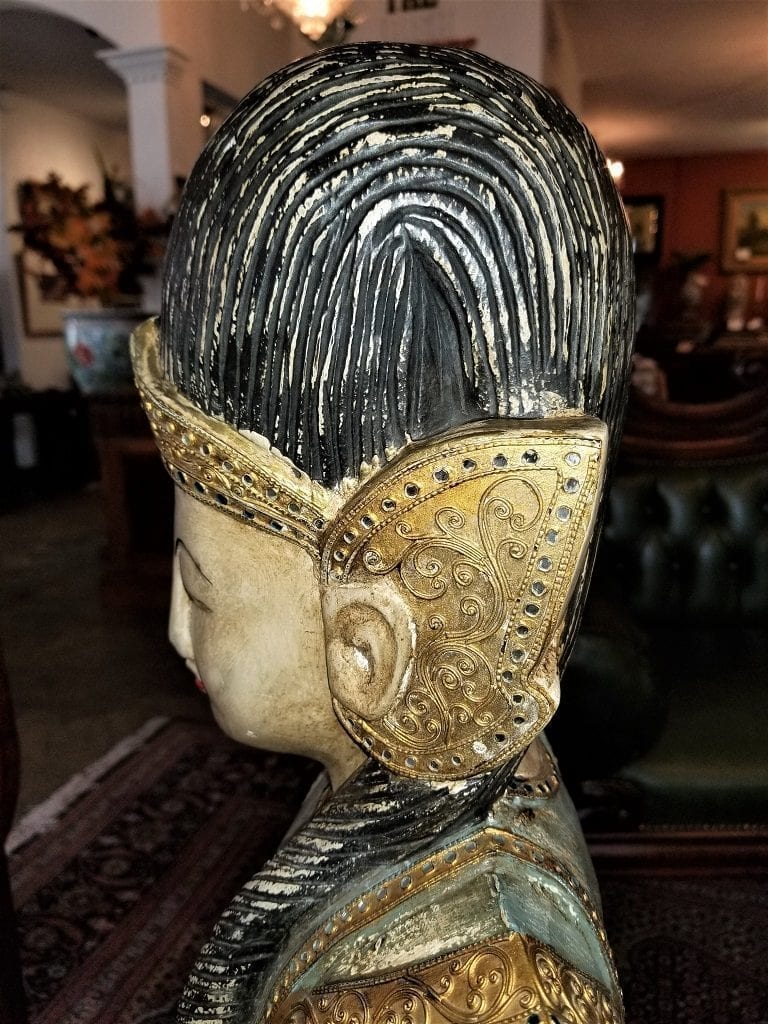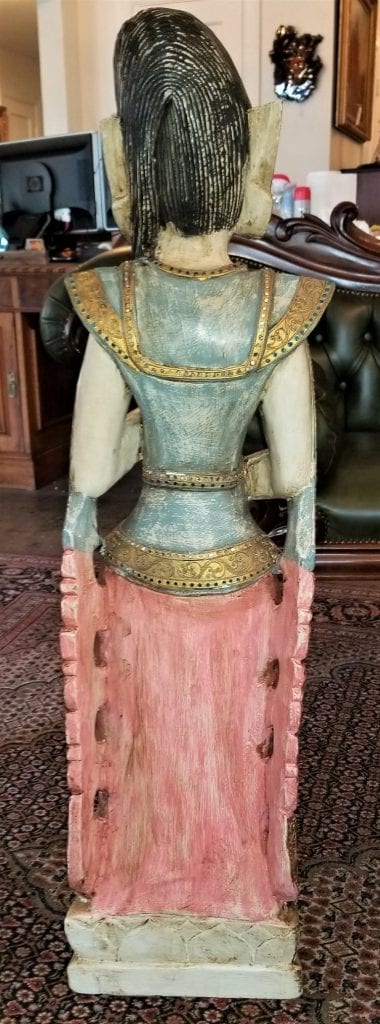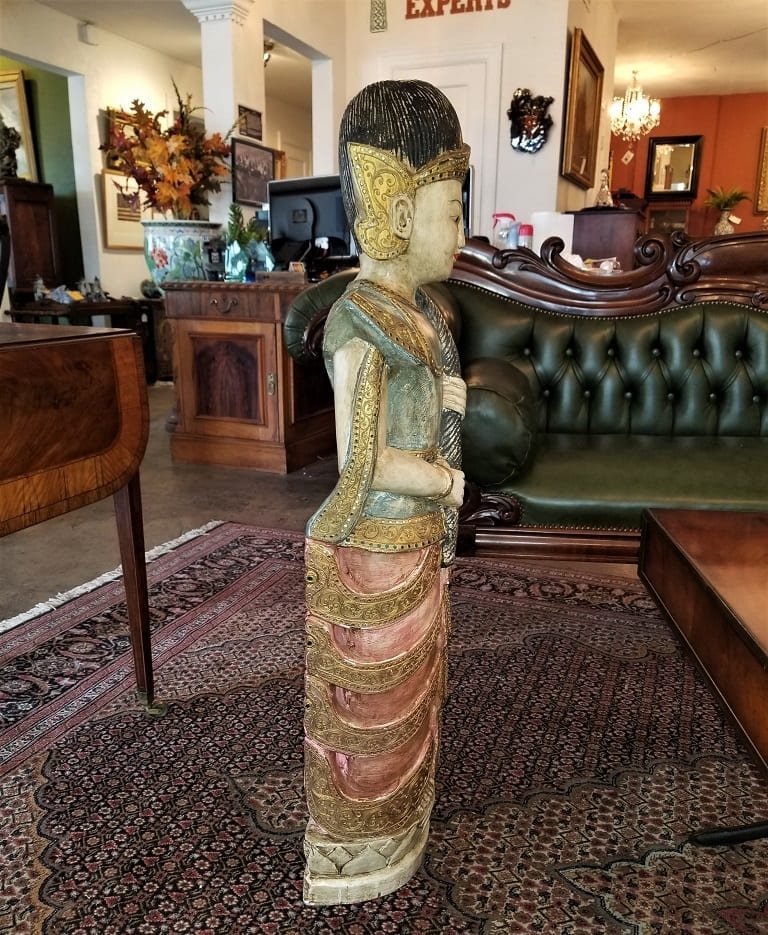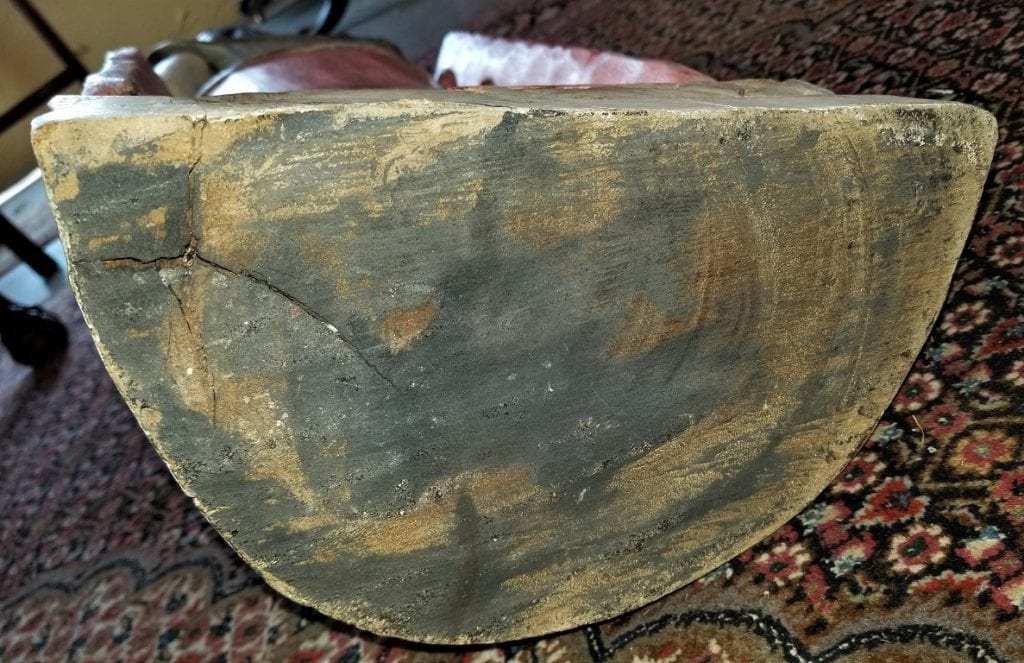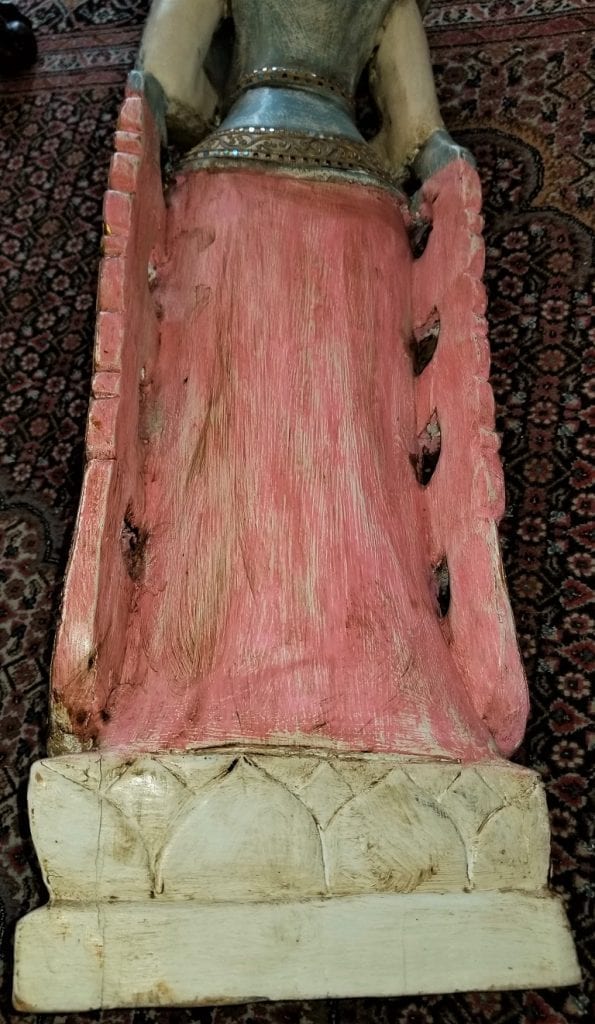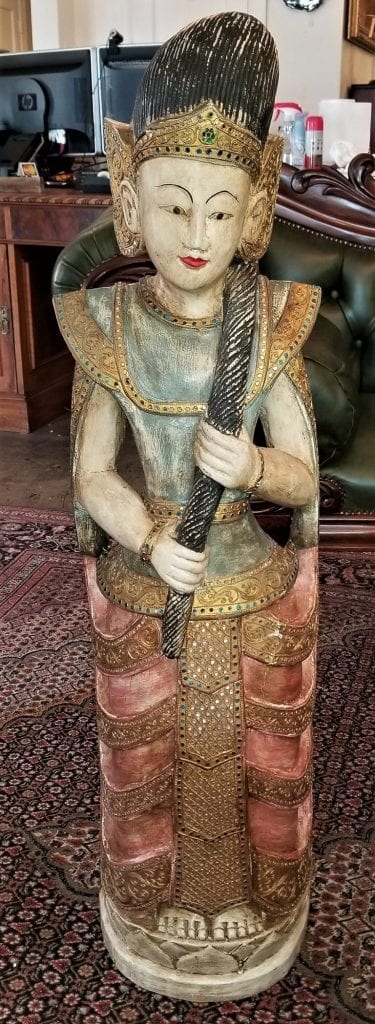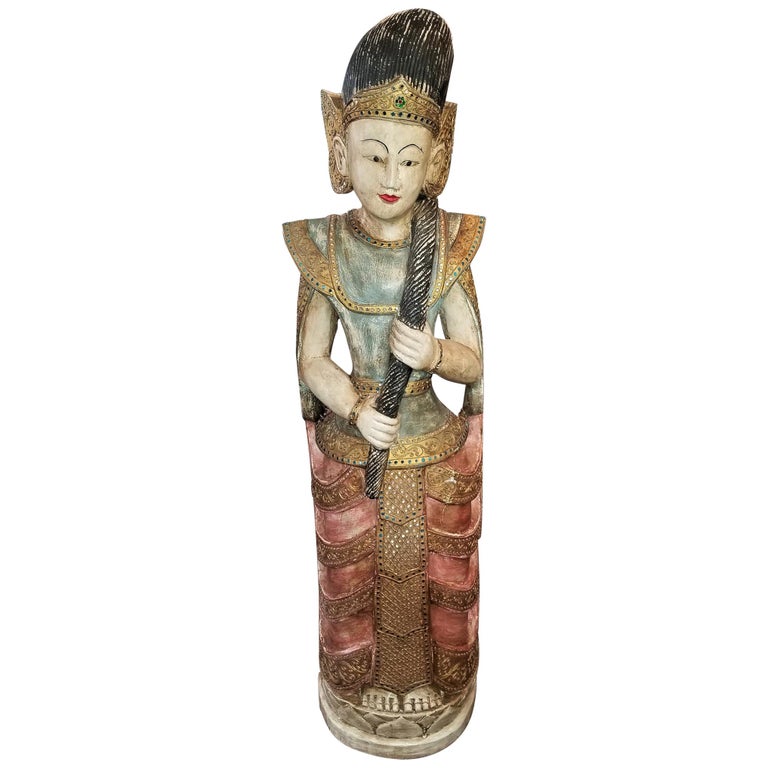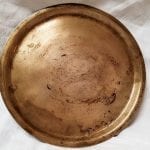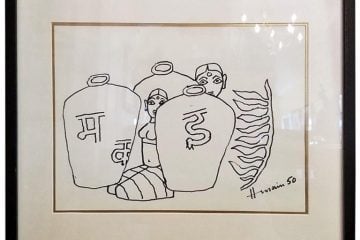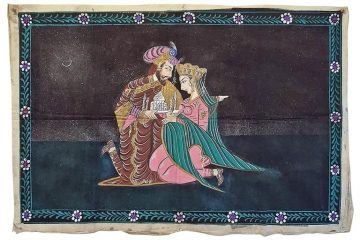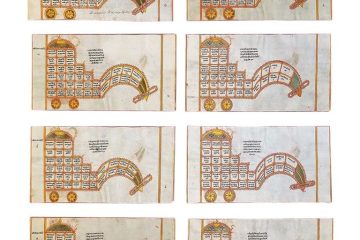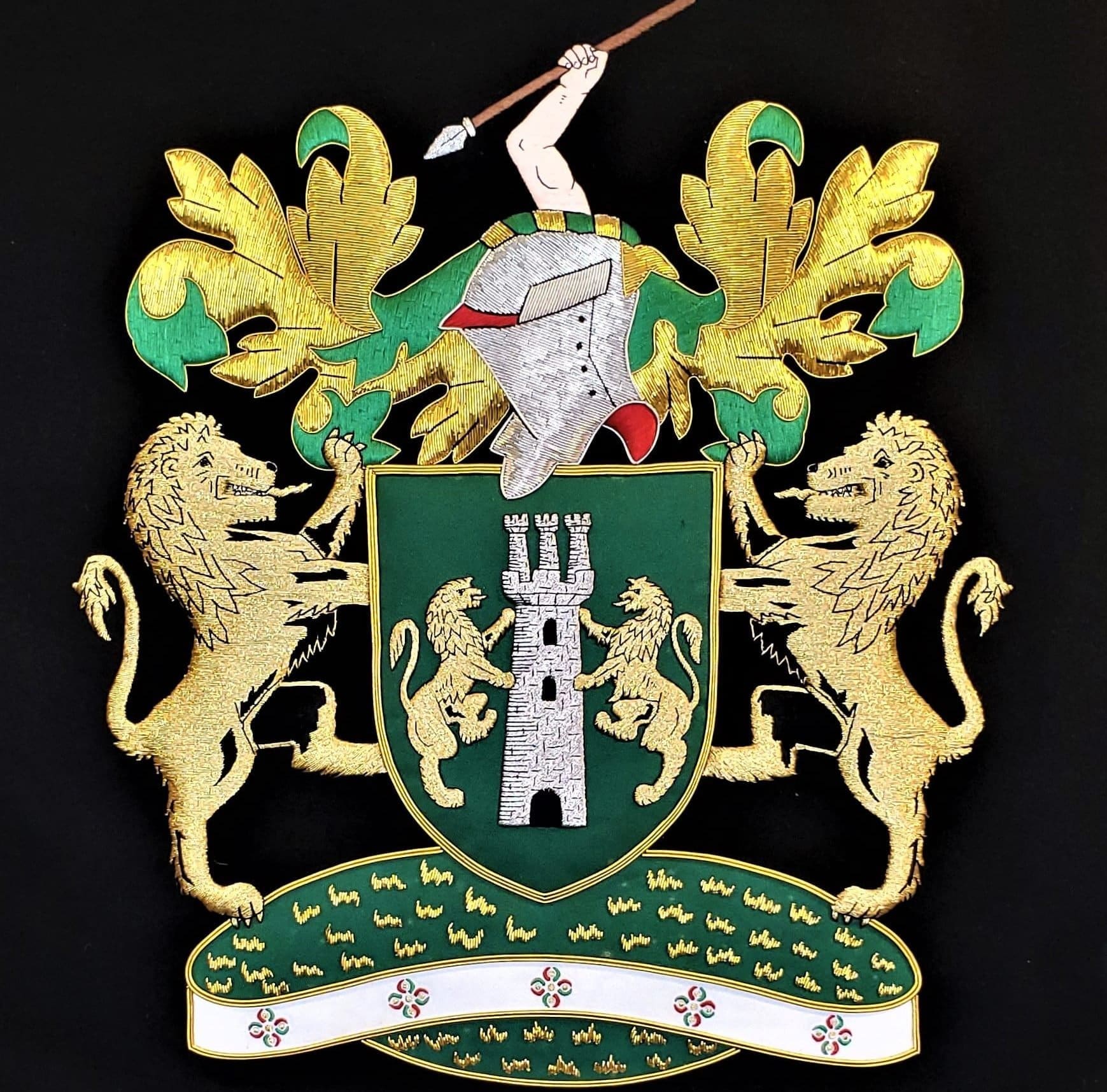Early 20C Thai Goddess Polychrome Statue
PRESENTING A GORGEOUS Early 20C Thai Goddess Polychrome Statue.
Made in Thailand in the early 20th Century, circa 1920.
Hand carved wooden statue which has been hand-painted (polychromed) all over. The headdress is gilded, as are parts of the costume and it has inset jeweled pieces of different colored glass all over the costume and headdress.
The Goddess is holding and squeezing her braided long hair and the quality of her costume signifies her significance or status. She is in fact a representation of Phra Mae Thorani … The Goddess of Love.
Acquired by a New York Private Collector in the mid 20th Century on a visit to Thailand.
Vasundharā or Dharaṇī is a chthonic goddess from Buddhist mythology in Southeast Asia. Similar earth deities include Pṛthivī, Kṣiti, and Dharaṇī.
She is known by various names throughout Southeast Asia. In Khmer, she is known by her title Neang Kongheng (នាងគង្ហីង, lit. “lady princess”),[2] or as Preah Thorani’ (ព្រះធរណី).[3] In Burmese, she is known as Wathondare (ဝသုန္ဓရေ) or Wathondara (ဝသုန္ဓရာ) (from Pali: vasundharā) and variously transliterated as Wathundari, Wathundaye, Vasundari, etc.[2] In Thai and other Tai languages, she is known as Thorani (from Pali: dhāraṇī, lit. ‘ground, earth”‘)[4] in various appellations, including Nang Thorani (นางธรณี), Mae Thorani (แม่ธรณี), and Phra Mae Thorani (พระแม่ธรณี).
Images of Phra Mae Thorani are common in shrines and Buddhist temples of Burma, Cambodia, Thailand and Laos. According to Buddhist myths, Phra Mae Thorani is personified as a young woman wringing the cool waters of detachment out of her hair to drown Mara, the demon sent to tempt Gautama Buddha as he meditated under the Bodhi Tree.
The Bodhisattva was sitting in meditation on his throne under the Bodhi Tree, Mara, the Evil One, was jealous and wanted to stop him from reaching enlightenment. Accompanied by his warriors, wild animals and his daughters, he tried to drive the Bodhisattva from his throne. All the gods were terrified and ran away, leaving the Bodhisattva alone to face Mara’s challenge. The Bodhisattva stretched down his right hand and touched the earth, summoning her to be his witness. The earth deity in the form of a beautiful woman rose up from underneath the throne, and affirmed the Bodhisattva’s right to occupy the vajrisana. She twisted her long hair, and torrents of water collected there from the innumerable donative libations of the Buddha over the ages created a flood. The flood washed away Mara and his army, and the Bodhisattva was freed to reach enlightenment.— A Study of the History and Cult of the Buddhist Earth Deity in Mainland Southeast Asia[5]
In temple murals, Phra Mae Thorani is often depicted with the Buddha in the mudra known as calling the earth to witness. The waters flowing forth from her long hair wash away the armies of Mara and symbolize the water of the bodhisattva‘s perfection of generosity (dana parami).
Link: https://en.wikipedia.org/wiki/Phra_Mae_Thorani
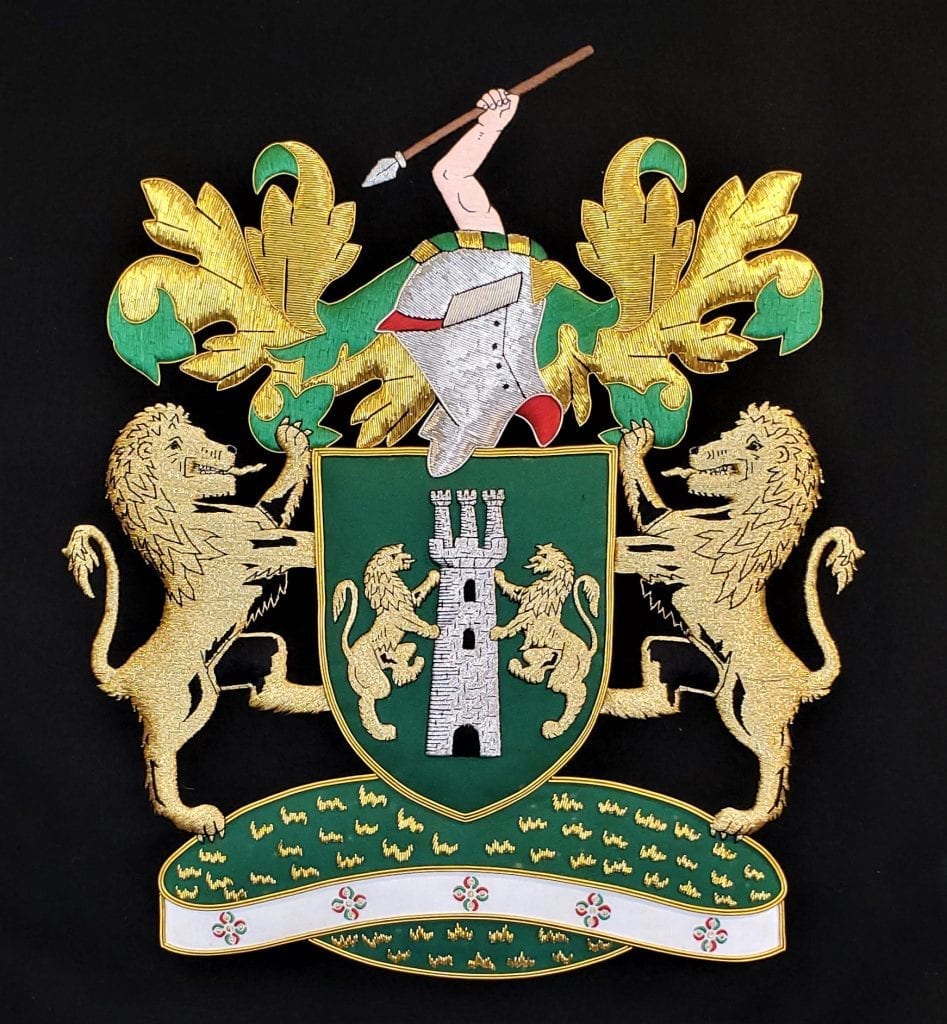

Early 20C Thai Goddess Polychrome Statue
Provenance: Acquired by a New York Collector and Art Dealer whilst on a visit to Thailand in the Mid-20th Century.
Condition: Very good original condition. A few missing pieces of glass but nothing significant to devalue the piece.
Dimensions: 40.25″ Tall, 10.25″ Wide and 7″ Deep.
SALE PRICE NOW: $2,600


